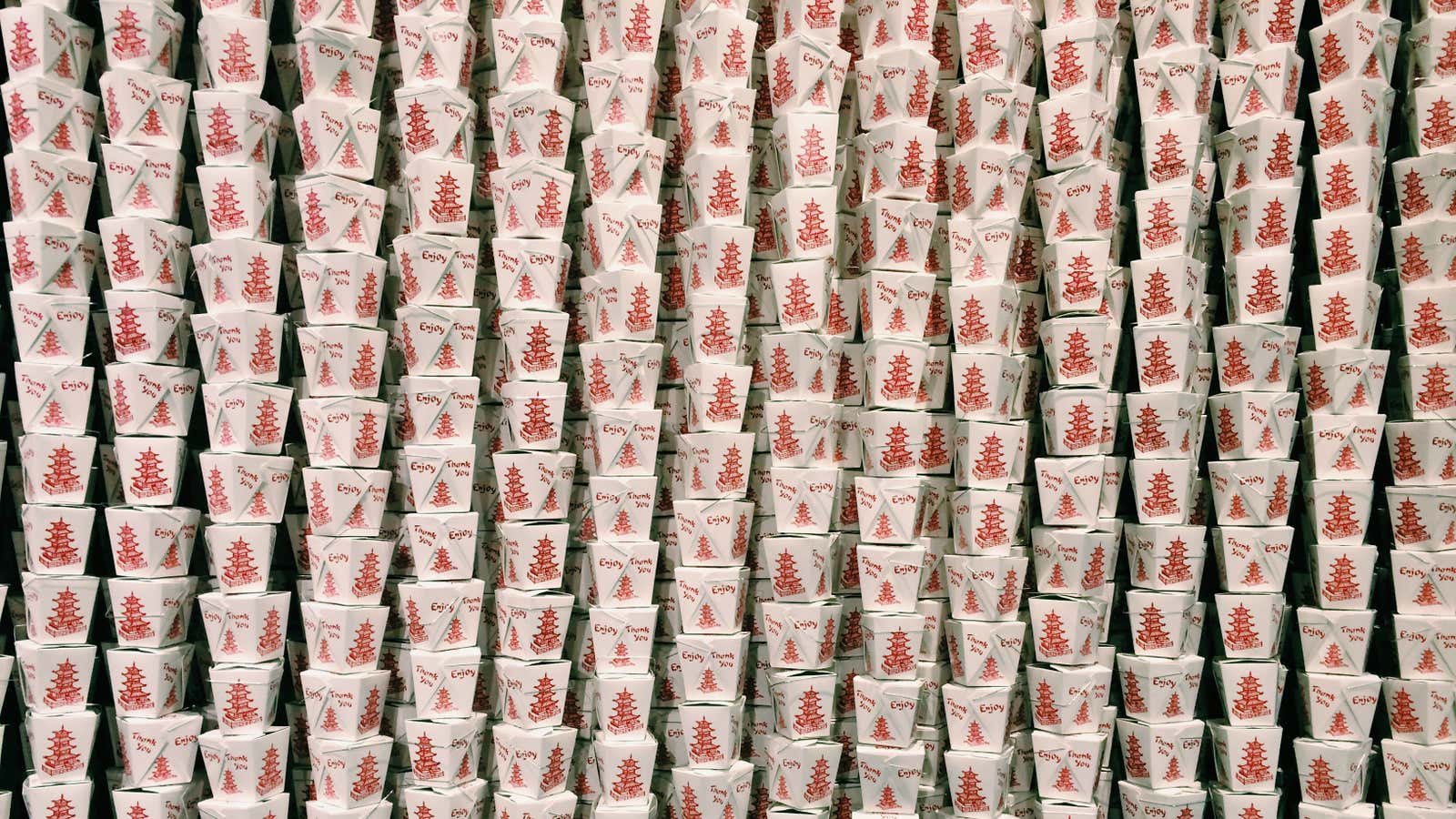Peng Chang-kuei (彭長貴), who created General Tso’s Chicken, one of the US’s most famous mystery dishes, died in Taipei this week (Nov. 30) following a bout of pneumonia at the age of 98, according to Taiwanese media reports.
The dish, omnipresent on fluorescent take-out menus across the US, is a beguiling cultural touchstone that still enchants the American public and all but ensures chef Peng’s unlikely imprint on the history of how we eat. In creating it, Peng became an unwitting poster child in the art of ubiquity.
His off-hand achievement is a decidedly skewed window into traditional Chinese cuisine that was embraced by an American public eager to gorge on it, a drippy-sweetness slathered and fried into the golden, crunchy chicken dish ordered today as much in middle America as in the coastal cities.
Peng came of age in the Hunan Province of south-central China, dining on a chili-pepper-infused regional cuisine that’s often compared to the hot and numbing staples of Sichuan dishes (though Hunanese food is known more for its dry heat). At 13, Peng worked under chef Tan Yan-kai (譚延闓), who served the family of the Chinese Nationalists’ prime minister in the mid-1920s, before those forces fled to Taiwan during the Communist takeover.
In interviews with the Chinese press, Peng recalled a moment in 1952, after World War II, when he was charged with serving food during a four-day visit by the US Seventh Fleet commander, admiral Arthur Radford. Following three days of traditional Chinese dishes, Peng said he wanted to try something different.
He chopped his chicken and tossed it into a pan—a dash of sauce and spices; a bit of sugar. It fried into gold and made its way before the naval officers. With no name immediately in mind, Peng on the spot called it General Tso’s Chicken, for Tso Tsung-tang (左宗棠), an infamous Hunanese military figure from the Qing dynasty.
It was a hit.
Peng went on to move to the United States, and in 1972 opened a restaurant in New York, where the dish captured the attention of the American palate. He served intellectual luminaries such as former US secretary of state Henry Kissinger, earning him media attention that spotlighted the dish and inspired other Chinese-American restaurateurs to offer their own versions.
Interest in the dish only increased during the administration of US president Richard Nixon, whose visit to Beijing in 1972, and subsequent thawing of Sino-American relations, led to a bout of gastrodiplomacy that hoisted Chinese cuisine further into the imaginations of the American public, an interest hastened by a proliferation of Chinese-American restaurants.
“I think what’s interesting is that it helped contribute to US citizens thinking positively about the cuisines of China,” said Johanna Mendelson Forman, an adjunct professor and researcher of gastrodiplomacy at American University. “In recent years, Chinese regional foods and food waves have become a great interest in Chinese cultural diplomacy.”
Over time, access to the dish across America became so widespread that any specific knowledge about its origin was seemingly lost to history. It was even the subject of a 2015 documentary that sought to re-discover the roots of the dish.
In November 2014, Peng was honored by the Taipei city government as an “outstanding citizen” for his creation of General Tso’s Chicken, according to the Taipei Times. He accepted the award alongside his son, Chuck Peng (彭鐵誠), who told the newspaper that his father’s signature dish found fame, in part, because it was a departure from what American eaters were used to seeing.
“At the time, American-Chinese food was dominated by dishes like chop suey, which were invented earlier by Cantonese immigrants seeking to make a living,” he told the newspaper.
Over time, the Americanized Chinese cuisine that Peng helped pioneer would become so famous, it would be served in Chinese cities, where it also captured the curiosity of those interested in seeing their own culture through the a reverse-lens of immigration and innovation.
